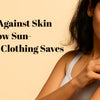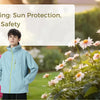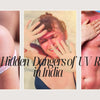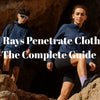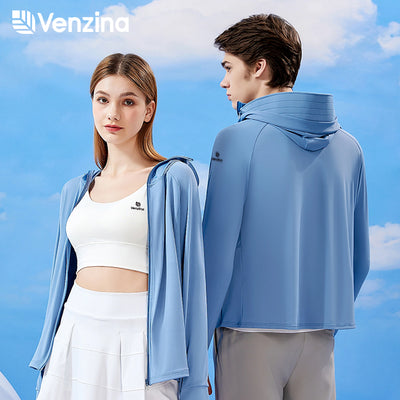Shielding Against Skin Cancer: How Sun-Protective Clothing Saves Lives
- by IN Venzina

Understanding Skin Cancer
Skin cancer arises from the unchecked division of unusual skin cells prompted primarily by ultraviolet radiation. Clear statistics show it ranks among the world’s most frequently diagnosed cancers. The upward trend of the past decade underscores the urgent need for effective preventive action. Consistently shielding skin from ultraviolet rays not only cuts personal risk and saves lives but also eases the worldwide pressure on health systems now burdened by this primarily avoidable illness.
The Link Between UV Exposure and Skin Cancer
Ultraviolet radiation weathers the skin and harms the DNA within cells. The resulting DNA damage produces mutations capable of setting cells on a path of endless division. Over the years, steady exposure, whether in the midday sun or from indoor tanning lamps, compounds this injury and increases the probability of three principal forms of skin cancer: melanoma, basal cell carcinoma, and squamous cell carcinoma.
Why Prevention Is More Effective than Cure
The Science of Sun Damage
UVA vs. UVB Rays
Visible and hidden ultraviolet radiation work in concert to shorten skin resilience. UVA, with its longer wavelengths, sneaks past the surface and triggers fine wrinkles, leathery texture, and cell-level damage that may later express itself as malignancy. UVB, the shorter wavelength, strikes the top layers, produces painful sunburn, and draws the immune system into costly repair work. A combination of UVA-blocking and UVB-blocking filters is, therefore, the only strategy that guards against every known sun-associated health threat, from childhood beaches to adult workdays.
DNA Damage and Mutation Process
UV rays physically alter DNA in skin cells, leading to mutations that, if unrepaired, can push cells to multiply beyond normal limits and form malignant tumors. These mutations pile up when skin isn’t shielded, eventually tiring out the body’s DNA repair mechanisms. Once that cycle starts, the normal safeguards break down, making the need for solid sun protection immediate and ongoing. Without deliberate protection, the body is put on a dangerous downhill trajectory toward abnormal cell growth and skin cancer.
Cumulative Sun Exposure Over a Lifetime
The toll of sun exposure isn’t visible right away; it sneaks in one unprotected minute at a time throughout the years. Each skipped application of sunscreen, each occasion of bare arms, is an excess dose added to a lifetime tally. Over time, that tally emerges as wrinkles, uneven pigmentation, or a new bump that to the untrained eye looks innocuous while already housing lethal potential. By covering the skin today, the most lasting and far-reaching reward emerges tomorrow and the day after, and every day to follow.
Skin Cancer Types and Risk Factors

Common Types of Skin Cancer
Basal cell carcinoma grows slowly and is the most common, while squamous cell carcinoma usually moves faster and has a talent for traveling if left unchecked. Melanoma, on the other hand, can be frightfully aggressive if it pushes beyond the skin’s surface; the shimmer of mercy is that its case can be steered away from that fate almost every time with timely vigilance and care. Simply naming these tumors makes real the idea that defense is more sensible—indeed, more empowering—than any later cure.
Who Is at Higher Risk?
Those with porcelain skin, translucent freckles, golden hair, or an ancestral record of skin cancer are not candidates for case-by-case consideration; they need a perpetual protection plan. Immunity that is already weary, and any familial nod to malignancy, compound the price exposure demands moment after moment. For these groups, the strongest safeguards—rash guards that sport built-in UPF and a consistently applied broad-spectrum shield throughout the daylight hours—become a strategic armor that decisively cuts lifetime risk for both the visible surface and the invisible DNA beneath.
Environmental and Occupational Risks
Daily sunlight workers—farmers, lifeguards, and construction crews—face steeper UV risks. Exposure rises at high altitudes and equatorial latitudes, meaning location matters. Wearing long sleeves and wide-brimmed hats and carefully timing outdoor shifts helps lower occupational UV dosing over time.
Traditional Sun Protection Methods
Sunscreens and Their Limitations
Sunscreen gives shielded minutes, but reapply every two hours. Sweat, swimming, and missed spots whittle its power. Chemical sensitivity can trigger rashes. If you skip sunscreen on bare spots, the skin can burn. Clothing rated for UPF hugs the skin, adding a consistent barrier when layered over sunscreen.
Shade and Time Management
Steer clear of direct sun from late morning to early afternoon. Shade lowers risk rates, but soft rays scatter and reflect in surprising ways. Shade combined with long sleeves, hats, and UV-block fabric reinforces the outdoor plan and guards against unpredictable UV pockets.
Sunglasses and Hats
Introduction to Sun-Protective Clothing
What is Sun-Protective Clothing?
People who spend most of the day outdoors—farmers, lifeguards, construction workers—encounter elevated UV risks. Living in mountainous or equatorial areas raises the danger even further. Slide the odds back in your favor by wearing long-sleeved protective clothing and wide-brimmed hats and by structuring your work and play schedule around the sun.
UPF Rating Explained
Sunscreen guards the skin for a set time, but it won’t count unless it’s reapplied every couple of hours. Sweat, seawater, and missed bands of skin cancel its strength. In sensitive individuals, the chemicals themselves may irritate, leaving small red areas exposed. Relying purely on lotion lets too much ultraviolet slip by. Instead, look for fabrics with UPF coating, layer on the lotion, and you’ll fortify both skin and peace of mind.
Evolution of Sun-Safe Fabrics
If you can, plan outdoor labor for the late afternoon or after. Between late morning and early afternoon, the sun is a ferocious adversary. Shade is welcome, but it’s not a castle wall—light bounces off sidewalks, water, and even past green leaves. Don long sleeves and find partial cover, and you’ll zip a strong, protective layer around you even when the sun’s sneaky rays still pass.
How Sun-Protective Clothing Works

Fabric Composition and UV Blocking
Shield your eyes with quality UV protective sunglasses, and protect your scalp and face with the armor of a wide-brimmed hat. Just remember that most hats have not been vetted for sun-blocking power. Seek out hats tested for UPF, like Venzina’s selection, for stylish strength that links shoulder with coverage, buffering you against ultraviolet mischief and making the outdoors a safer place to thrive.
Color and UV Protection
Sun-protective clothing isn’t just forward thinking; it’s rigorously tested to keep UV rays from reaching your skin. While the average t-shirt might say 100% cotton, these items are subjected to international testing, so only the highest performers can display the UPF label, providing a tough yet lightweight barrier against the skin ailments linked to excessive sunlight exposure.
Weave and Stretch Factors
UPF isn’t a guess; it tells you the exact fraction of UV that’s getting through. A UPF of 50 hands a mere 2% of the rays, the freedom to touch your skin, yet more generally, the higher the UPF, the better the barrier. Use these ratings as your quick cheat sheet when scanning the clothing rack so you can stroll outdoors confident you’re getting reliable, on-demand coverage.
Key Benefits Beyond UV Protection
Reducing Risk of Skin Cancer
In the beginning, a finely woven cotton shirt was the best sun shield most of us could find, which was better than nothing but hardly miraculous. Laboratories began experimenting, layering tight microfilaments and blending natural and engineered fibers, and the outcome is today’s optimized fabric line. Companies like Venzina take comfort-level stretch and airy moisture control and stitch it around a molecular sunscreen so your daily outfit can keep pace with lunch on the lawn, the coffee run to the pool, or that daily walk the fitness app keeps nagging you about.
Preventing Premature Aging
Under the hood, UPF clothing employs a few key design secrets: tightly packed fibers, denser knits, and yellow fibers turned gray or white by specific blocking agents, mostly nylon and polyester. The combination adds weight you won’t feel and grants durability that the washing machine can’t take away. That way, your daily shorts or layer shirt can act like a force field without restricting a single, effortless step of your Saturday hike.
Cooling and Comfort Technology
Advanced fabrics strike a harmonious balance between safety and everyday comfort. Moisture-wicking structures disperse perspiration and minimize heat buildup, while micro-perforated textures promote airflow, keeping skin pleasantly cool. Such innovations act as a natural choice for steamy regions.
Choosing the Right Sun-Protective Clothing

Understanding UPF Labels
Official UPF ratings are mandatory for selections. UPF15 delivers competent defense; UPF50 delivers a near-total UV barrier. Certifications originate from independent, repeatable lab tests, giving shoppers confidence that the garment will steadfastly screen harmful rays, whether along a seashore or a city street.
Recommended UPF Levels for Different Activities
Splashing generates the strongest UV hazard because glare off water intensifies radiation. Select UPF50, which is swim-friendly. A trek through open sun, conversely, will perform best with UPF40 or UPF50 long-sleeve tops and lightweight trousers; daily denim or skirts may achieve an adequate shield with UPF30. Selecting the precise rating for the intended activity minimizes the cumulative risk while preserving comfort.
Fitting Comfort with Function
Soft silhouettes promote all-day wear. Cut lines that favor movement, stretch through the knees without ballooning, and gel at the shoulder blades all aid golf, cycling, or office desk work alike. A hat, such as the elegantly tailored Venzina model for women, repackages safety in a chic format, merging uncomplicated sun defense and contemporary appeal into an object that habitually finds a home on the entry rack.
Complementary Protection Strategies
Combining Sunscreen with Clothing
Sunscreen protects areas clothing can’t cover, but when you combine it with UPF clothing, you make a nearly impenetrable barrier. Reapplying sunscreen regularly, even underneath a long-sleeved shirt, along with slipping on UPF leggings, leaves no amount of dermis unattended. Chasing these extra hours of high-level UV rays with smart layering looks steep, but it turns into a prudent long-game strategy when you consider how strongly these two layers drive down overall risk.
Using Accessories for Added Coverage
To make that barrier even thicker, nab accessories that grasp the knuckles, neck, and décolletage. Lightweight gloves, a silk or polyester scarf, and a snap-on neck gaiter link these common sun-friendly areas, while a hat with a wide brim or a cap fitted with a soft flap blankets the scalp and jaws. The idea of adding these layers can feel cumbersome on a hike or a five-hour drive, but out there, the sun relentlessly picks on the few square centimeters you forgot, and reefing against that impending sun attack with these few items lights up a reasonable balance.
Global Regulations and Standards
International UPF Certification Standards
Countries around the world make rules to test, reinsure, and ensure UPF ratings that you can trust. Australia first passed strict directions, and like a few upstarts, the USA and most links in Europe came up with almost matching seals fast. That everyone is aligned on UPF testing protocols is great news for globe-trotters, sure of the safety of any sun-fend shirt bought while passing through Hong Kong, Lisbon, or Melbourne.
Industry Testing Procedures
Labs in any testing scheme first wrap the fabric beneath a beam that runs through the same UV slice you’ll confront outdoors, measuring how much gets through, how the fabric levels up after extra washes, and how the weave looks after a few hours in the park, only when both levels burst through the safety figures upstream sticker UPF at the seams. Being told the sun shirt won’t fade, and the weave remains UV-tight for months of family outings and surfs is, in short, the benchmark you expect when the cap doesn’t short the math.
FAQs
What does UPF mean in clothing?
When you see UPF on a garment label, it stands for Ultraviolet Protection Factor, a measure of how well that fabric keeps harmful UV rays away from your skin.
Can regular clothes protect me from skin cancer?
Every day, clothing filters some radiation. It often falls short. Garments specifically engineered with UPF give you higher and steadier defense. That helps lower the risk of skin cancer.
How often should I replace sun-protective clothing?
For best results, swap UPF clothing every one to two years, or sooner. If you notice the fabric growing thin, stretchy, faded, or lower than its original UPF rating.
Is sunscreen still necessary if I wear UPF clothing?
You still need lotion. Apply broad-spectrum sunscreen to areas the outfit doesn’t reach, like your face, wrists, and neck.
Does washing sun-protective clothing reduce its effectiveness?
Machine washing normally retains the protective rating, as long as you skip harsh detergents and frequent bleach. Stick to the gentle cycle and hang dry for longer wear.
Are there stylish options for sun-protective clothing?
UPF gear can look good—think sleek jackets, chic hats, and flowing dresses. Venzina, for example, blends UPF 50+ technology with stylish designs you’ll want to wear.
Do children need different UPF levels than adults?
Kids need the same UV shield as grown-ups, but wrap them in more layers. Their skin is still developing, and the thinner top layer soaks up UV rays more easily.
Can sun-protective clothing be worn year-round?
Rain, shine, or snow, your skin is at risk. UV rays pass through clouds and bounce off snow drifts, making sun protective clothing a smart choice every month.
Is UPF clothing safe for sensitive skin?
Sensitive skin? No problem. UPF clothing works through tight weave and knit techniques, not chemicals, so it keeps UV-free and minimizes allergy chances.

